Call Us
+86 136 6007 9809
Call Us
+86 136 6007 9809
Mar. 21, 2023
Requirements for the design of the exposed length of the bolt!
For bolt exposed nut, what length is good? Is there a corresponding standard? Let's discuss this topic today and see what standards are available for this exposed head length. We can give a reasonable and convincing answer through the standards, theoretical analysis, and practical experience. Each standard, for the bolt, exposed nut length size requirements.
1.B/ZQ 4247-2006 standard stipulates that the length of the remaining inside and outside threads of the common thread, the depth of the remaining hole, and the size of the end of the bolt protruding from the nut, the exposed length is also basically controlled in the range of 2-4 threads from the standard.
2.GB50205 standard stipulates that the exposed thread bolt should not be less than two threads.
3.GB50235 standard stipulates: bolt connection should be installed in the same direction, all nuts should be screwed into the bolt, and tighten the bolt and the nut should be flush. Bolt exposed nut length can be 0 threads, as long as the flush can be.
4. ASME B31.3 standard states that the bolt should extend entirely through the nut. If the lack of full extension through the nut is no more than one thread pitch, then any exposed head length that does not reach full extension through the nut is also considered acceptable. This means that the minimum good standard is that one thread can be recessed into the nut, which is also acceptable.
5. The DIN78 standard stipulates that the exposed length of a regular nut is two threads, and the sensitive length of a locknut is three threads. This is in line with the popular standard
6. Popular standard stipulates that the bolt's exposed length is the same as the DIN78 standard. Also, the bolt shows two threads of the standard nut, and the nut with a locking unit should show three threads.
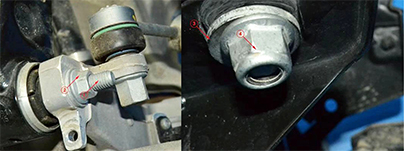 | 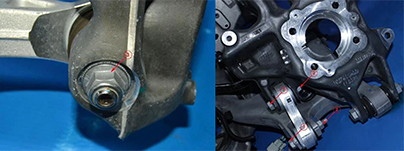 |
What is the appropriate length of the exposed head of the bolt?
- For aesthetic and convenience reasons, there is a requirement for the length of the exposed head of the bolt in installation work: 2 to 3 threads of the bolt should be exposed to the nut.
- To standardize the bolt's design, the length should be rounded to 5mm, and the size should be designed with 2-3 threads.
- In this sense, exposing more than two threads is better because there are incomplete threads with less than two threads in the bolt thread processing.
- In terms of the strength of the bolt connection, the effective thread engagement length is sufficient to meet the requirements. Since there are two threads with incomplete threads, a minimum of 2 threads should be exposed in terms of strength.
- For lock nuts, if there are precisely two threads, it may cause the holding torque to be reduced after a slight loosening, so at least three threads are considered for lock nuts. This is also by the standard requirements of DIN78.
In general, the exposed length of the bolt can meet the requirements of DIN78, but sometimes, it is not necessary to comply with this requirement in exceptional cases.
In particular, the maximum exposure length can be considered up to 5 threads as long as it does not interfere with the parts and does not have a significant impact on the assembly beat.
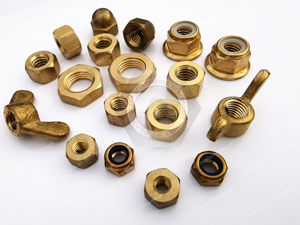 | 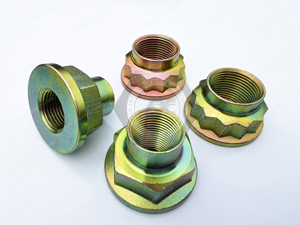 | 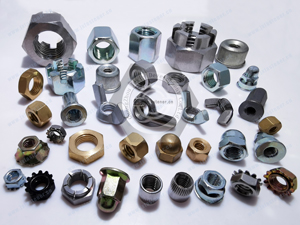 |
New high-vibration anti-loosening fastening parts
Nylon self-locking nuts are a new type of high-vibration anti-loosening fastening parts that can be applied to the temperature -50 ~ 100 ℃ in various machinery and electrical products. Its anti-vibration and anti-loosening performance are much higher than other anti-loosening devices, and its vibration life is several times higher or even dozens of times. Generally, threaded fasteners, in the role of vibration shock load, are often due to self-loosening and failure.
1、The working principle of nylon lock nut is to use the friction between the nut and the bolt to achieve self-locking. Materials include carbon steel, stainless steel, copper, aluminum alloy, titanium alloy, DIN, ISO, GB, and other standards.
Two 、Locking nut is one of the anti-loosening measures. The locking nut's anti-loosening effect depends mainly on the interaction force between the thread and the nut. Various methods can improve the force between the engaging threads, such as improving the thread structure of the sizing nut, nylon nut nylon increased brown, thread surface treatment, etc., and can improve the interaction force between the engaging threads.
Second, DIN980V all-metal lock nuts
DIN980V specifications cover ≤M4-M39, thread tolerance of 6H-(before plating), and coarse and fine teeth. Performance grade is 8 or 10, surface treatment environmental protection blue white zinc passivation, environmental protection galvanization, copper plating, zinc-nickel alloy, etc. The stainless steel material is generally A2 A4, in the form of SIM.DIN980. The tolerance fit is generally 6g/6H before coating and 6h/6G after ordinary galvanization.
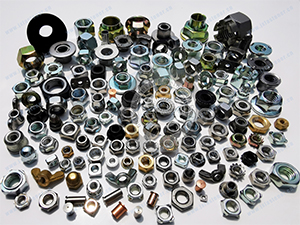 | 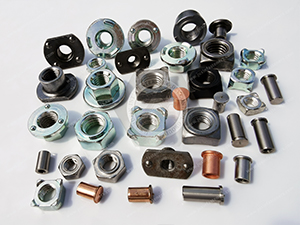 | 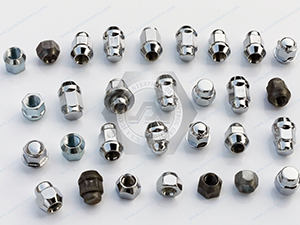 |
What should I pay attention to when welding nuts?
One 、When welding, keep the whole working environment ventilated. Otherwise, the air will not circulate, and the room will produce harmful substances, affecting people's health. And when welding, you must use blocking net protection to prevent danger.
2, in the welding process, pay attention to the welding part and tungsten pole centerline angle to maintain between 80-85 ° to better protect the welding pool.
3, and the filler wire and welding surface angle are to be within 10 ° to ensure the entire nut surface is fully welded to prevent the nut accessories from being lost.
Four 、When welding the nut, several chamfers are on it, so during the welding construction, the current will be concentrated at these chamfers to form a solid weld joint. Therefore, the welding should change the angle appropriately to prevent too much current from damaging the chamfer.
Five 、If you are welding ordinary nuts, the welding current requirement is more significant and longer to provide sufficient heat for the molten nucleus to form a stable and solid welded joint. When welding nuts, you need to master professional skills to complete the welding of nuts and pay attention to safety to prevent the occurrence of danger. We will continuously adapt to meet evolving customer requirements. We are uniquely equipped to provide the total assembly solution!
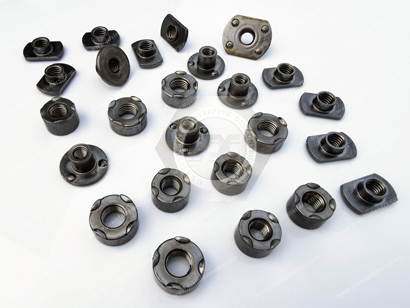 | 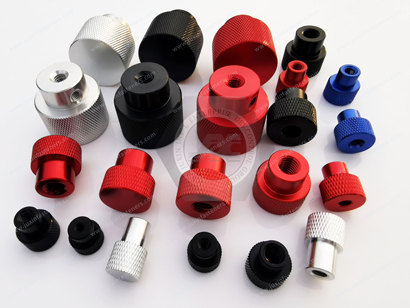 |
Contact Us
Tel.:
+86 020 8621 0320
+86 020 3121 6067
Technical Support:
Navigation
SEND INQUIREY